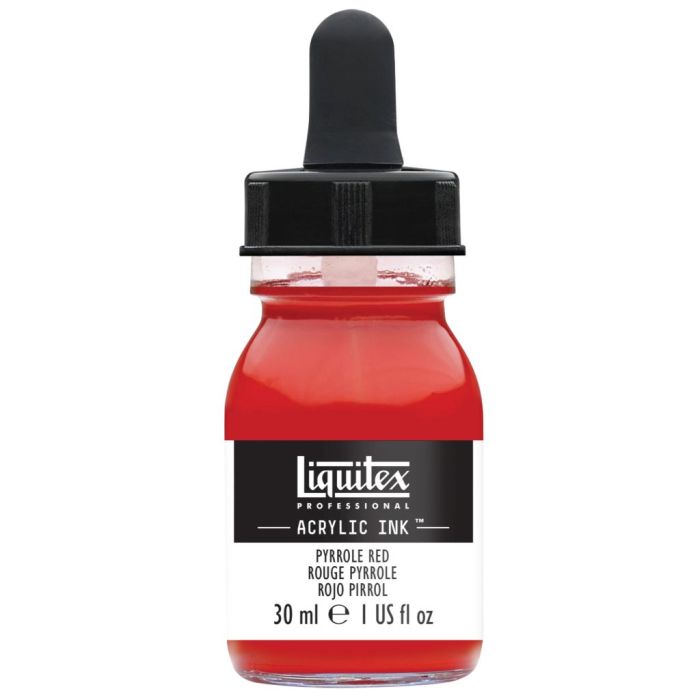Liquitex Professional Acrylic Ink - Pyrrole Red (321) - Bottle of 30 ML
Liquitex Professional Acrylic Ink - Pyrrole Red (321) - Bottle of 30 ML
Liquitex Professional Acrylic Ink - Pyrrole Red (321) - Bottle of 30 ML
Liquitex Professional Acrylic Ink made with finely ground artist quality pigments instead of colorants. They dry quickly, are permanent, water resistant and non-clogging, which makes them ideal for a variety of techniques from watercolour effects to stamping. Colour Name - Pyrrole Red - A bright warm red, highly transparent single pigment color. It is a clean red which mixes well with other colors. Pyrrole was first discovered in 1834 and its name comes from the Greek for reddish or fiery.
Liquitex Professional Acrylic Ink made with finely ground artist quality pigments instead of colorants. They dry quickly, are permanent, water resistant and non-clogging, which makes them ideal for a variety of techniques from watercolour effects to stamping. Colour Name - Pyrrole Red - A bright warm red, highly transparent single pigment color. It is a clean red which mixes well with other colors. Pyrrole was first discovered in 1834 and its name comes from the Greek for reddish or fiery.
The Galeria Acrylics line consists of 60 magnificent colors in 60ml tubes and 500ml Jars making it ideal for art & design students, hobbyists, muralists, decorative painters and fine artists who work on a grand scale.
Although Galeria Acrylics are sometimes referred to as a fine grade acrylic, their high pigment levels deliver professional results with significantly better covering power than many similarly priced brands
Liquitex Professional Acrylic Ink made with finely ground artist quality pigments instead of colorants. They dry quickly, are permanent, water resistant and non-clogging, which makes them ideal for a variety of techniques from watercolour effects to stamping. Colour Name - Pyrrole Red - A bright warm red, highly transparent single pigment color. It is a clean red which mixes well with other colors. Pyrrole was first discovered in 1834 and its name comes from the Greek for reddish or fiery.





























